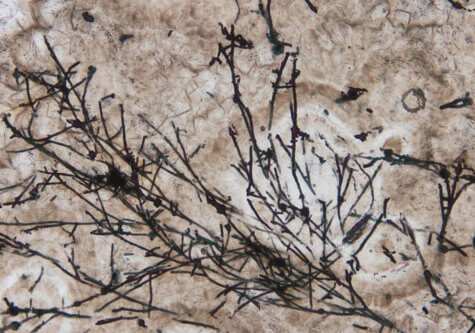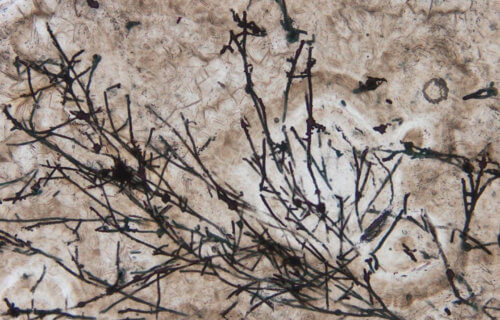BLACKSBURG, Va. — While finding the bones of a dinosaur may be exciting, scientists at Virginia Tech say they’ve unearthed something three times older than those enormous creatures. In a new study, researchers say they’ve discovered the world’s oldest land fossil, a fungus which helped planet Earth recover from the ice age — 635 million years ago!
Study authors are now re-thinking theories on how and when life evolved at crucial points throughout the planet’s history. The lifeform was discovered in small cavities inside rocks in the Doushantuo Formation in South China. The area is famous for its well-preserved fossils from the Ediacaran period, an era following a 15-million-year ice age sometimes called “snowball Earth.”
“It was an accidental discovery,” says Tian Gan, a visiting PhD student and part of the team making the discovery, in a university release.
“At that moment, we realized that this could be the fossil that scientists have been looking for a long time. If our interpretation is correct, it will be helpful for understanding the paleoclimate change and early life evolution.”
Shedding light on prehistoric times

Following the astonishing find, experts from the Chinese Academy of Sciences, Guizhou Education University, and the University of Cincinnati joined the Virginia Tech team in analyzing the specimen. Researchers now say their discovery is key for understanding turning points in Earth’s history such as when fungus appeared on land.
When the Ediacaran period began, the planet was recovering from a catastrophic ice age and was an incredibly harsh environment for virtually any living organism. One exception was microscopic life, which managed to thrive during this time. Scientists have long wondered how life ever returned to normality and how the biosphere was able to grow larger and more complex than ever before.
Study authors now believe the ancient fungus could break down rocks and recycle nutrients back into the ocean, kick-starting a resurgence of life across the planet.
“Fungi have a mutualistic relationship with the roots of plants, which helps them mobilize minerals, such as phosphorus,” Gan explains. “Because of their connection to terrestrial plants and important nutritional cycles, terrestrial fungi have a driving influence on biochemical weathering, the global biogeochemical cycle, and ecological interactions.”
Is the fungus really a fungus?
The findings are shattering long-held beliefs that fungi and plants began living symbiotically 400 million years ago and colonized the land. Now, researchers think it could have been much earlier.
“The question used to be: ‘Were there fungi in the terrestrial realm before the rise of terrestrial plants?'” says Professor Shuhai Xiao from the Virginia Tech College of Science. “And I think our study suggests ‘yes’. Our fungus-like fossil is 240 million years older than the previous record. This is, thus far, the oldest record of terrestrial fungi.”
The team is now looking into how this organism interacted with others around it and if it is even a fungus at all. They will also be trying to unravel the mystery of how it was fossilized in the first place. Just 60 years ago, scientists didn’t think it was possible for soft life-forms like fungi to be fossilized.
“We have a general idea that they lived in small cavities in dolostone rocks. But little is known about how exactly they lived and how they were preserved,” Prof. Xiao explains.
“Why can something like fungi, which have no bones or shells, be preserved in the fossil record? We would like to leave things open for other possibilities, as a part of our scientific inquiry,” the study author concludes. “The best way to put it is that perhaps we have not disapproved that they are fungi, but they are the best interpretation that we have at the moment.”
The findings appear in the journal Nature Communications.
SWNS writer William Janes contributed to this report.
